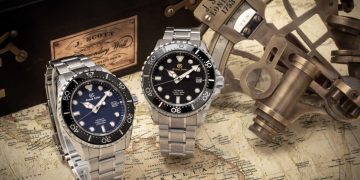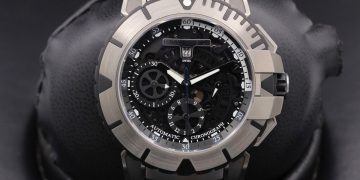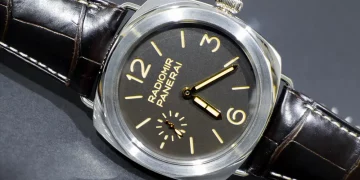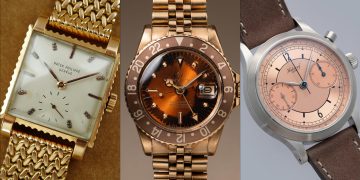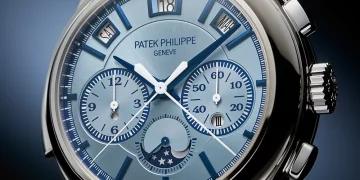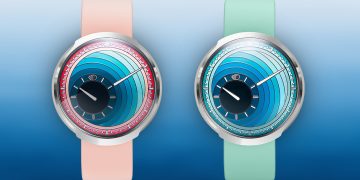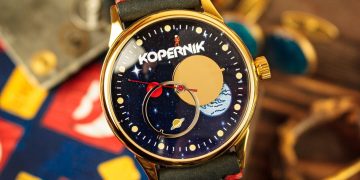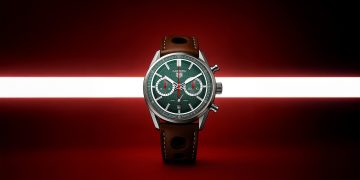Introduction: The Unseen Web of Watch Industry Ownership
The luxury watch industry is one of the most prestigious and highly coveted markets in the world. For watch enthusiasts, collectors, and consumers alike, the names of prestigious Swiss and global watch brands carry immense weight. Some of these brands are seen as independent entities with a rich history and their own unique legacy. However, behind the polished facades and luxurious marketing campaigns, there’s a hidden truth that many consumers may not be aware of: several iconic watch brands are secretly owned by the same parent company.
In a business world dominated by mergers and acquisitions, the watch industry is no different. What many may not realize is that some of the most well-known names in the horology world—whose models are distinct and seem to stand on their own—actually share common ownership. These connections have significant implications for both the industry and the consumers who make decisions based on brand identity and legacy.
In this article, we will explore five major watch brands that are owned by the same parent company. We will discuss the history of these brands, the influence of their shared ownership, and how this affects both the luxury watch market and the consumer experience. Let’s take a closer look at some of the surprising links between these brands and what it means for those who seek to buy their next prized timepiece.
The Powerhouse: The Swatch Group
Perhaps one of the most powerful and influential conglomerates in the watch industry, Swatch Group owns some of the most prestigious names in horology. Swatch Group’s ownership spans several high-end brands, each offering a unique style and a distinct product offering. Among these brands are Omega, Breguet, Longines, Tissot, and Hamilton.
Omega: The Luxury Legend
Omega, with its rich legacy and iconic status, is one of the most well-known brands in the world. Known for its role in space exploration and its partnership with the James Bond franchise, Omega has crafted timepieces that have endured for over 170 years. Despite its status as a standalone powerhouse, Omega is, in fact, owned by Swatch Group, which controls the brand’s direction, management, and strategic decisions.
The brand has become synonymous with both precision and luxury, and this status has been reinforced by its constant innovation in watchmaking, particularly through its Co-Axial escapement technology. While Omega maintains its own identity in the market, the backing of Swatch Group allows it to benefit from the company’s vast distribution channels and financial power.
Breguet: Timeless Elegance and Innovation
Breguet is another crown jewel in the Swatch Group portfolio. Known for its historical significance in horology and its continuous innovation, Breguet remains one of the most prestigious brands in the industry. Founded by Abraham-Louis Breguet, the brand is renowned for creating the tourbillon and making other critical contributions to the evolution of watchmaking. Despite its position as one of the most revered names in luxury timepieces, Breguet, like Omega, is owned by Swatch Group.
Breguet’s high price point and its appeal to royalty and the elite highlight its distinction in the luxury market. However, it shares its ownership with Omega and other prestigious brands under Swatch’s umbrella. This ownership connection has not diminished its reputation but rather helped it retain an air of exclusivity while being supported by Swatch Group’s extensive resources.
Longines: The Icon of Classic Watches
Longines, another key member of Swatch Group’s portfolio, has a unique blend of elegance and performance that sets it apart from other luxury brands. Established in 1832, Longines has a long and storied history in producing precise and reliable watches. Known for its commitment to craftsmanship and its connection with sports events such as equestrian competitions and alpine skiing, Longines holds a distinguished place in the luxury watch market.
While Longines maintains its identity as a high-end brand with a focus on classic timepieces, it too benefits from the financial backing and shared resources of Swatch Group. Longines’ presence in the market has only been strengthened by its parent company’s ability to maintain economies of scale across a range of watch brands, enabling Longines to maintain both affordability and prestige.
Tissot: The Affordable Luxury
Tissot, one of the largest and most popular watch brands globally, caters to a broader audience than Omega, Breguet, or Longines, yet still carries a reputation for quality and style. Known for its innovation in the early 20th century, Tissot made history by creating the first plastic watch and pioneering the development of the t-touch technology, which enables touch-sensitive functionality.
Tissot, while offering relatively more affordable timepieces compared to other Swatch Group brands, benefits from being part of a conglomerate that includes luxury names. Swatch Group’s backing allows Tissot to offer exceptional watches at competitive prices while maintaining high standards of craftsmanship.
Hamilton: A Blend of Military Heritage and Innovation
Hamilton is another example of a watch brand under the Swatch Group umbrella. Founded in 1892, Hamilton has a rich history of supplying watches to the military, particularly during World War II. Its connection with Hollywood has also elevated its status, as Hamilton watches have been featured in various famous movies over the years. Hamilton’s designs often combine American heritage with Swiss precision, creating a unique niche in the watch market.
Although Hamilton occupies a more accessible price range than Omega or Breguet, it shares ownership with these high-end brands, allowing it to benefit from Swatch’s expansive reach. Hamilton’s versatility and enduring popularity can be attributed to both its innovative designs and its connection to Swatch Group’s broader marketing strategies.

The Implications for the Watch Industry
The shared ownership of major watch brands under Swatch Group has profound implications for the watch industry as a whole.
Consolidation of Resources
One of the biggest advantages for Swatch Group in owning multiple brands is the consolidation of resources. By sharing research and development, manufacturing facilities, and marketing efforts, Swatch Group can streamline its operations, cutting costs and increasing efficiency across the board. This makes it easier for the company to maintain a wide range of products, from affordable timepieces to ultra-luxury offerings.
Brand Positioning
With such a diverse portfolio, Swatch Group is able to position its brands effectively to appeal to different segments of the market. Omega and Breguet represent the high-end, luxury side of Swatch’s portfolio, while Tissot and Hamilton provide quality timepieces at more accessible prices. This broad strategy ensures that the conglomerate has a presence in almost every segment of the luxury and affordable watch markets.
Innovation and Cross-Brand Synergies
Swatch Group’s control over multiple brands allows for cross-brand synergies. For example, technological innovations developed for one brand, such as Omega’s Co-Axial escapement, could be integrated into other brands within the portfolio. This flow of innovation across brands allows Swatch to remain at the forefront of horological development while maintaining differentiation between each individual brand.
The Consumer’s Perspective: What Does This Mean?
While consumers may appreciate the high-quality timepieces offered by these luxury watch brands, the reality of shared ownership raises a few important questions for discerning buyers.
Perception of Brand Authenticity
For some, knowing that a prestigious brand like Omega is owned by the same parent company as more accessible brands like Tissot and Hamilton may affect the perceived authenticity or exclusivity of the brand. Consumers who place a high value on heritage and independence may view this corporate ownership as a potential conflict, especially when it comes to pricing strategies and brand differentiation.
Pricing and Value
One potential drawback of the shared ownership among multiple brands is the impact on pricing strategies. As brands within the same conglomerate share resources, some consumers might question whether the price premium associated with a luxury brand is justified. With brands like Omega and Breguet benefiting from economies of scale, it raises the question of whether these brands are as “exclusive” as they seem, or if the price is more about marketing positioning than actual differentiation.
Brand Loyalty and Marketing
The sheer number of brands within a single parent company can also affect brand loyalty. Consumers who align with a specific brand’s ethos may find themselves drawn to other brands under the same umbrella, which may dilute their sense of loyalty. Swatch Group’s strategic marketing and cross-brand advertising ensure that consumers are kept within the family, even as they purchase from different brands under the same roof.
Conclusion: The Hidden World of Watch Industry Ownership
The ownership connections between luxury watch brands may surprise many consumers, but they reveal an interesting dynamic at play in the luxury watch market. Swatch Group, with its vast portfolio of iconic brands such as Omega, Breguet, Longines, Tissot, and Hamilton, has created a powerful and efficient business model that spans across all segments of the watch industry.
For consumers, the implications of this shared ownership can lead to a deeper understanding of brand positioning, pricing strategies, and the complexities of the luxury watch world. Whether this transparency will influence purchasing decisions remains to be seen, but it certainly adds another layer of depth to the conversation surrounding the luxury watch market.


